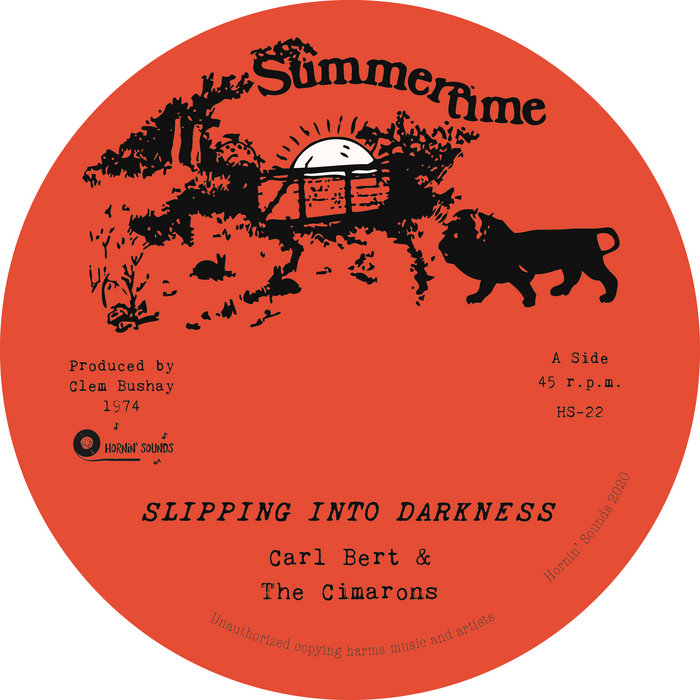
Slipping Into Darkness – Carl Bert & The Cimarons
this blog is GROOVY – check out great Soul, Funk, Jazz, Hip Hop, Bass, Breaks , Reggae, House n many more TUNES
Welcome to the funky world of multitrack music—a playground for creativity where sounds come together in glorious harmony! Grab your headphones, kick back, and let’s groove through the history of how this innovative technique transformed the way we make and experience music.
Back in the day when vinyl was king, recording music was a pretty straightforward affair. You had one microphone—maybe two if you were feeling adventurous—and you captured everything live. That meant everyone had to be spot-on because mistakes couldn’t be fixed later on. Can you imagine that pressure? It’s like performing karaoke with a crowd watching while you’re out of tune with your best friend!
The magic began unfolding in the late 1940s when pioneers like Les Paul decided that one track just wasn’t enough for their creative souls. Les Paul, who was more than just a legendary guitarist—he was basically a mad scientist with his guitar—began experimenting with tape recorders and layering sounds.
In 1955, he released “How High the Moon,” which featured multiple guitar tracks woven together into an intricate tapestry of sound. This innovation opened up whole new realms for musicians—the ability to record different instruments separately allowed artists to get super groovy without needing an entire orchestra in one room! Talk about leveling up!
Fast forward to the ’60s; multitracking hit its stride as studios started using machines that could record four tracks at once (hold on tight!). With legends like The Beatles leading this charge, songs became complex arrangements filled with harmonies only possible through separate recordings.
Here’s some juicy gossip from those days: During sessions for “Sgt. Pepper’s Lonely Hearts Club Band,” John Lennon reportedly muttered “I’m not getting outta bed for less than 10 tracks” because he loved layering his vocals until they sounded cosmic! It seems even Rock ‘n’ Roll royalty knew how important it was to have plenty of layers… just like cake!
As technology evolved so did our musical capabilities. In the ’80s, affordable home recording gear came into play thanks largely to digital audio workstations (DAWs). Suddenly anyone from bedroom producers dreaming big or cats jamming on weekends could create layered masterpieces right from their living rooms.
Funny fact: In early DAW days (we’re talking around ’89), many musicians found themselves lost within these elaborate systems trying desperately not only how to use them but also how not accidentally delete entire songs—with no undo button available! Talk about horror stories during mixing sessions!
By moving into today’s vibrant scene dominated by laptop wizards armed with MIDI instruments and plugins galore, multitrack recording has become second nature—to say nothing about it being drastically easier than before!
Artists can build complex compositions without even meeting their bandmates face-to-face sometimes (“Hey dude… want me email my bass line?”). Still holds true—even amidst all this tech wizardry—that some performers prefer vintage analog vibes over shiny new software simply because these old-school methods add warm character onto recordings.
One infamous incident featured Prince—yes THE Prince—in which he recorded entire albums himself utilizing multiple instruments throughout each song like something straight outta another dimension! Imagine making all those parts happen single-handedly yet still finding time between concerts wearing flamboyant outfits every night—you gotta love it!
Today’s artists relish limitless possibilities that come along with modern tools—all accessible at our fingertips!
These days genres blend seamlessly; hip-hop collabs see rappers trading bars remotely while pop stars sprinkle electronic fairy dust onto indie rock jams—it is beautiful chaos exemplified through intricately crafted layers upon layers we’ve learned from past greats.
Let’s not forget interesting occurrences — did anybody hear Dua Lipa claimed she recorded her smash hit “Future Nostalgia” using literally every remote device imaginable? Yup—a mixer here/a phone there/even plugging into neighbors’ speakers occasionally served well under her motto: Just ask first though people!!
And there you have it—the splendiferous journey through multitrack music history—from Les Paul’s groundbreaking experiments right up till now where quirky characters inspire new generations endlessly blending genres at lightning speed.
Next time someone asks what makes multilayering special remember this: Every layered masterpiece is more fun when artists push boundaries beyond mere notes played—for they too are crafting delightful tapestries wrapped snug within grooves worth dancing all night long!
So crank up those tunes and let yourself ride high atop waves made possible by trails blazed before us because remembering history only enhances every note played today—gotta love groovy histories full circle!

Slipping Into Darkness – Carl Bert & The Cimarons